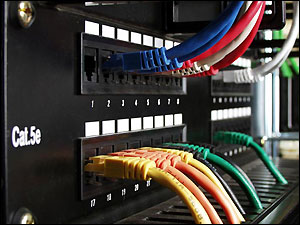
What is AV?
AV or Audio Visual is a broad term with a variety of meanings depending on who you talk to. It has become an umbrella term which covers a whole spectrum of individual elements largely based around an end users experience of electronic sound and vision in their home. This can range from simply installing a TV on the wall to the installation of complex home cinema systems which are linked via a computerized hub to control the whole house including the lighting, heating, CCTV, door entry and even closing the motorized blinds.
How did it happen?
 TV signals have traditionally always been distributed around the house by amplifying and then splitting them to different rooms using coaxial cables. When VHS first became popular in the early 1980s a very basic form of a modern AV system was born. The video playback system was considered to be quite cutting edge back then as it allowed the viewer to watch a video cassette in another room. This was then supplemented with the arrival of Sky in 1989 and DVD in the late 1990s. By the time that Sky+ was launched in 2001 it had become quite normal to have a stack of three or four boxes under the TV set.
TV signals have traditionally always been distributed around the house by amplifying and then splitting them to different rooms using coaxial cables. When VHS first became popular in the early 1980s a very basic form of a modern AV system was born. The video playback system was considered to be quite cutting edge back then as it allowed the viewer to watch a video cassette in another room. This was then supplemented with the arrival of Sky in 1989 and DVD in the late 1990s. By the time that Sky+ was launched in 2001 it had become quite normal to have a stack of three or four boxes under the TV set.
However the biggest changes came with the arrival of the “flat screen” TV. As wall mounted Plasma, LCD and LED screens replaced older style CRT TVs, viewers found that there was nowhere practical for a pile of Sky boxes, DVD and BluRay players to sit. In some cases people set their screen on top of an item of furniture which contained all the boxes but a far more desirable option is to hang the screen on the wall and to conceal the boxes out of sight.
PVR hard drive recorders made it possible to store and playback recorded content without the need for discs so it made sense to relocate the Sky box away from the screen. Initially this was straightforward but the arrival of High Definition (HD) TV brought fresh challenges. The only way to watch full TV in full uncompressed 1080p HD was via an HDMI lead which needed to be connected between the box and the TV. In some cases this was possible but HDMI leads have length limitations and bulky moulded ends which can’t be removed which prevents them from being fed through tight spaces.
Initially it was extremely difficult and expensive to distribute HD signals so only very high end properties were able to install the equipment to achieve this. But recently as demand for this type of technology has increased the solutions have become considerably cheaper and more accessible to everyone.










